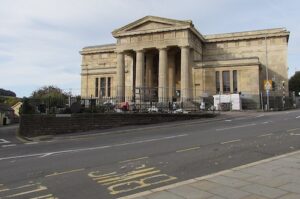
- Digital strategy
- Managing digital delivery
- Defining requirements
- Product development
A digital strategy that will enable a cross-cutting, online offer across libraries, museums and archives.

Results
Clear roadmap
Presented a three stage roadmap, which provides the team with a clear plan from which to initiate, grow and embed digital during the next five years
Planned and delivered key activities
Supported the launch of the first phase to focus on planning and delivery of key activities
Cross-cutting services
Provided the blueprint from which the organisation can expand cross-cutting online services to engage users and match their ever-changing expectations
Collaboration and innovation
Fostered collaborative, innovative partnerships, both internally and with third parties, to enable PCS to drive forward positive digital change in the heritage sector

Objectives
To deliver a digital strategy for Powys Cultural Services (PCS) that will enable them to develop a cross-cutting, online offer across their libraries, museums and archive.
Part of Powys County Council, PCS is responsible for delivering cultural and heritage services to the residents of Powys. During the first Covid-19 lockdown in March 2020, PCS had to quickly shift services online.
This led PCS to believe they could make a fundamental shift in delivery, with digital playing a significant role in their service transformation, as was happening across the heritage sector. Inspired by this, they sought funding to develop a digital strategy.
The aim of this strategy was to develop a digitally mature set of online services that could be accessible both to the people of Powys and to global audiences. It was crucial that the strategy’s findings could be embedded within PCS, cut across their different services, and be both sustainable and self-funding. Not only would the strategy support community engagement, but also influence and support the way in which PCS operates internally.

Solutions
To develop the strategy, we put in place four key research phases. These enabled us to pull together a comprehensive body of information about PCS, their users and the wider sector. The phases were:
Stakeholder research
A series of online workshops with key PCS stakeholders – we sought to fully understand the background, current picture, and aspirations for digital services from across their library, museum and archive delivery teams
User research
User surveys – helped us to understand service users’ digital skills, their online habits and interests
Staff research
Staff skills survey – established levels of digital skills and attitudes to online services within the wider workforce
Sector analysis
Sector research – surveyed current and innovative digital practices across the cultural and heritage sectors. This included a review of wider digital trends to inform the long term objectives of the strategy
Strategy development
These different research phases provided us with a solid foundation from which we could develop the strategy. Central to the document were a series of activity strands that described how the strategy could be implemented.